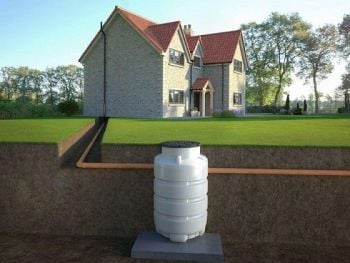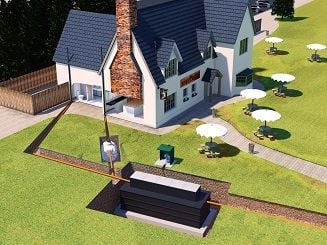Types of Sewage Treatment Plants
Wastewater Processes
There are many different kinds of sewage treatment plants which vary in the process by which they treat wastewater. Generally, they can be classified into the following types of system:
- Activated sludge plant (ASP)
- Rotating disc system
- Submerged aerated filter (SAF)
- Suspended Media Filters (SMF)
- Sequencing batch reactor (SBR)
- Non-electric filter
- Trickling filter
For more information on each type of treatment plant, please follow the links above by clicking on the relevant system.
All of these wastewater treatment plants operate in different ways and produce effluent of varying quality. Moreover, they all cope with different kinds of usage to differing degrees os success; some can tolerate being underloaded where some do not function as effectively. Some plants are most efficient with higher loadings where others are not able effectively process high levels of sewage. However, in all of the above cases, your sewage treatment plant must have the following:
- An EN 12566-3 test certificate
- A sewage treatment plant installation must comply with the Environment Agency General Binding Rules
- The ability to produce an effluent quality that enables you to comply the terms outlined by the Environment Agency (in their Permit to Discharge). This is typically 20mg/l of suspended solids, 30mg/l of biochemical oxygen demand (BOD) and 20mg/l of Ammoniacal Nitrogen (NH4)
If you have bought a property with an existing sewage treatment plant, it is important for you know EXACTLY what make and model of sewage treatment plant you have as well as an understanding of how your system works. This is important because:
- As the owner of the plant, the responsiblity of having the unit serviced and emptied at the appropriate intervals (as specified by the manufacturer) lies with you. In order for your plant to work properly, these works MUST be undertaken.
- You must have your sewage unit maintained in order to validate the manufacturer's warranty and comply with the Environment Agency. Failure to have your plant maintained can result in prosecution, a fine, and even a prohibition notice to stop you from discharging.
- If you are planning to enlarge your property, your plant may not be big enough to cope with increased loadings.
- Should the plant break down, for any reason, you will have a better understanding of what the problem is.
- Certain household detergents and sanitary items can cause serious damage to the health of your treatment plant. Proper vigilance can help avoid costly repairs.
ASP Sewage Treatment Plants
Examples of ASP Sewage Treatment Plants include:
- WPL Diamond
- Conder ASP
- Vortex
- Quantum
- BioPure
- Biodigester

ASP systems usually need servicing on a six monthly basis, depending on the manufacturer and population equivalent size. The Vortex plant is officially classed as an Advanced ASP (AASP) as it has a sludge return mechanism incorporated into the design. In each case, these plants require maintenance by a suitably qualified engineer. We have a large understanding and knowledge of these kinds of sewage treatment plants as we have maintained such wastewater systems for our customers for many, many years. Certain parts and fittings (depending on the manufacturer) on these plants can break over time either through stress or mechanical fatigue. In order for ASP's to function properly, the maintainance is essential. Some ASP sewage treatment plants use a lot more electricity than others, so choose your plant carefully.
Rotating Disc Sewage Treatment Plants
Examples of Rotating Disc Systems (Rotating Biological Contactors - RBC's) include:
- Klargester Biodisc
- Tuke and Bell
- Clearwater Rotoclear
Depending on size and manufacturer's specifications, RBC systems require servicing either a twelve monthly, six monthly or quarterly basis. The Clearwater Rotoclear is no longer in production. Regular maintenance by a suitably qualified engineer is essential to ensure the internal moving and mechanical parts are kept in good, working condition. We have much experience in servicing these kinds of sewage treatment plants, however, we only maintain these kind of plants provided that they are within a 35 mile radius of our offices. This is because any emergencies that may arise with these plants need to be dealt with immediately. Owing to their heavy reliance on the internal moving parts, maintenance on these particular plants is essential.
Submerged Aerated Sewage Treatment Plants
Examples of Submerged Aerated Filters (SAF's) include:
- Conder SAF
- Valance VES 5 and above
- Falcon
- Jewel
- Acorn
- Clearwater Aeroclear
- Tricel
- Marsh Ensign
- Matrix
- Leo Dawson
- Anua
- Apex

SAF sewage treatment plants require servicing on either a twelve monthly, six monthly or quarterly basis depending on size and manufacturer's specifications. There are many SAF plants that are no longer in production; if you have an obsolete SAF plant, please call us as we still maintain many SAF plants that are no longer produced. Again, regular maintenance is extremely important in order to maintain optimum efficiency, comply with the terms of your Permit to Discharge and avoid your plant from becoming and environmental pollution hazard. Moreover, there are many parts that are perishable (depending on the make and model) on SAF units that require replacing; renewing these parts is necessary in order to keep these plants operating properly. We have a great deal of experience servicing this kind of sewage treatment plant and currently maintain SAF's produced by a large number of different manufacturers.
Suspended Media Filter Plants
Examples of Suspended Media Filters (SMF's) include:
- Allerton Drainage
- Valance VES 1-4
- Clearwater Filterclear
- Titan
- Entec
- Klargester Biotec (and Airflow)
- Biodigester (pre 1997)
